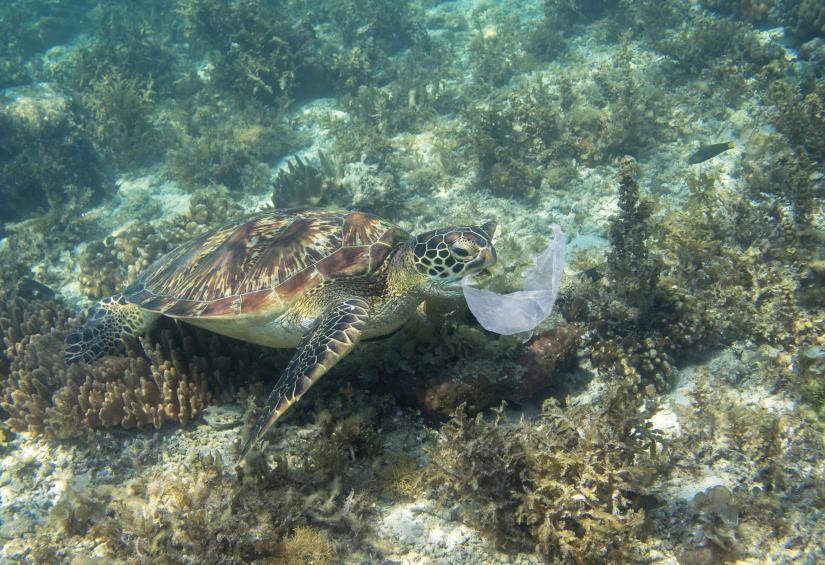It is estimated that around 4.8 to 12.7 mega tonnes of plastic leaks into the ocean each year. In 2020, ISF was commissioned by the Australian Government Department of Agriculture, Water and the Environment to understand how the international trade of plastics for recycling contributes to this problem, and to investigate opportunities for an environmentally responsible recycled plastics industry.
The trade in plastic waste
In 2016, more than half of the world’s plastic waste collected for recycling was traded internationally. Until 2018 – when it imposed restrictions on imports – China was the world’s largest importer of plastic waste. Since then, Southeast Asian countries picked up the load, but in 2019, various countries in Southeast Asia started to implement restrictions. From July 2021, Australia will ban the export of unsorted plastic waste, and by July 2022, Australian recyclers will need to undertake re-processing in Australia – that means sorting, washing, flaking and pelletising plastics so they are ready for use in manufacturing.
While the trade restrictions will reduce plastics entering the ocean, the diverse types of plastic packaging continue to pose a problem for recyclers and the environment.
The research
Working in partnership with Asia Pacific Waste Consultants and The Centre for International Economics, ISF conducted a series of interviews with trade experts, consultants, academics, NGOs and recyclers from Australia, India, Indonesia, Japan, Malaysia, Vietnam and Thailand.
The interviews gave researchers insight into the processes in place across Southeast Asia for recycling imported plastic, pointing to the roles of both registered recyclers and a significant ‘informal’ sector. Due to the high volume of plastic waste received, registered recyclers typically on-sell plastic bales to informal processors. Informal processors lack environmental controls and typically use old, inefficient machinery.
Interviewees explained that plastic types with a low market value are left unsorted and need disposal. Processors frequently dispose of these unwanted plastics by dumping them in uncontrolled landfills and burning them, or are sometimes dumped directly into waterways. Plastic can also leak into the environment when plastic bales are stored outside, and pieces can be blown into waterways.
This project resulted in the publication of three reports:
- Investigating the links between international trade and plastic leakage
- Capacity gaps and needs for managing plastic waste in the Asia Pacific region
- Case Studies on Plastic Waste Management and Trade in Asia Pacific
What are ‘low-value’ plastics?
The global recycled plastics market is dominated by two major plastic types:
- polyethylene terephthalate (PET), which in 2017 comprised 55 per cent of the recyclable plastics market. It’s used in beverage bottles and takeaway food containers and features a ‘1’ on the packaging
- high-density polyethylene (HDPE), which comprises about 33 per cent of the recyclable plastics market. HDPE is used to create pipes and packaging such as milk and shampoo bottles, and is identified by a ‘2’.
The next two most commonly traded types of plastics, each with 4 per cent of the market, are:
- polypropylene or ‘5’, used in containers for yoghurt and spreads
- low-density polyethylene known as ‘4’, used in clear plastic films on packaging.
The remaining plastic types comprise polyvinyl chloride (3), polystyrene (6), other mixed plastics (7), unmarked plastics and ‘composites’. Composite plastic packaging is made from several materials not easily separated, such as chip packets, sachets and long-life milk containers with layers of foil, plastic and paper.
These remaining types of plastic are not generally sought after as a raw material in manufacturing, so they have little value to recyclers and are discarded.
Opportunities to improve
Our research showed that exporting countries can help reduce the flow of plastics to the ocean by better managing trade practices. This could include:
- improving collection and sorting in export countries
- checking destination processing and monitoring
- checking plastic shipments at export and import
- improving accountability for shipments.
But this won’t be enough. The lack of recycling opportunities for many types of packaging mean we must rethink packaging design. That means using fewer low-value plastic and composites, or better yet, replacing single-use plastic packaging with reusable options.
RESEARCH OUTPUTS
Environmentally responsible trade in waste plastics in the Asia Pacific region (2020) (Multiple reports)
MEDIA
Think all your plastic is being recycled? New research shows it can end up in the ocean - The Conversation, March 2021
Ocean of trouble for recycled plastic - Radio Adelaide, March 2021
A long journey ahead – where do our recyclable plastics go? - Eastside Radio, March 2021
Researchers
-
Research Director
-
Research Principal
-
Senior Research Consultant
-
Associate Professor & Research Director
Year
- 2020
Clients
- Australian Government Department of Agriculture
- Water and the Environment
Partners
- Asia Pacific Waste Consultants
- The Centre for International Economics







